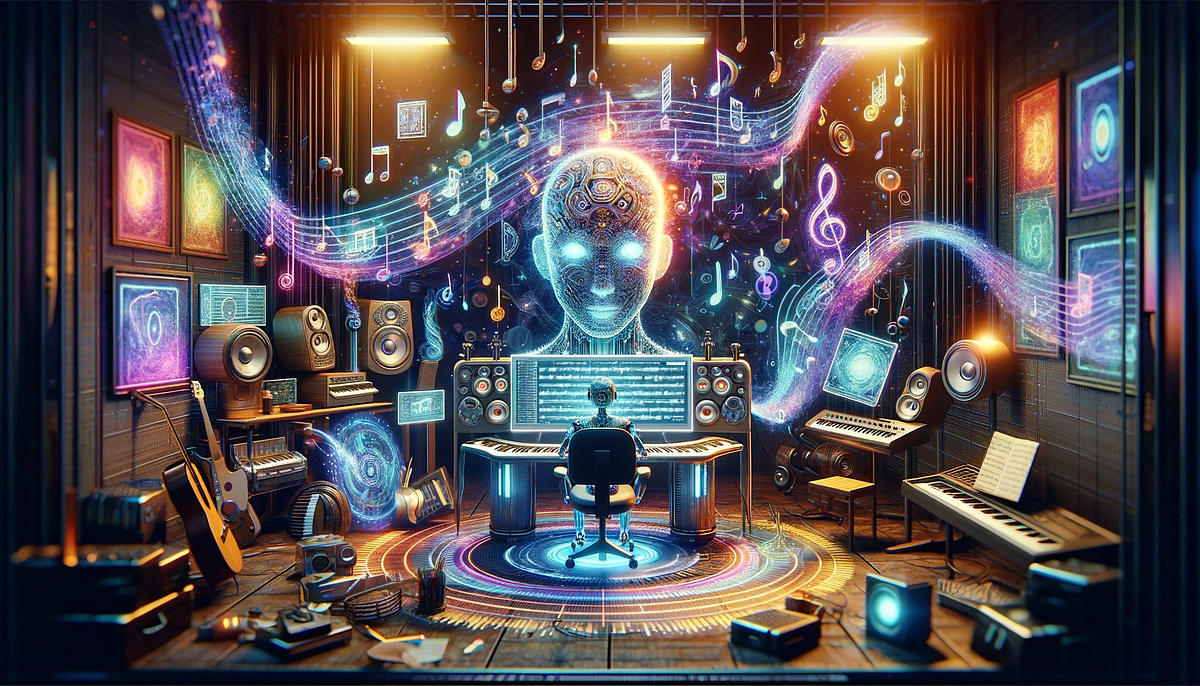
In Mountain Watch, California there’s a museum that goals to provide you with “distinctive views” on tool, stressing a belief that “our computational earlier informs our virtual provide” and pointing out their intention to “keep our collective history.”
Or, to set it an extra approach, we will admire how a lot we have now happen by way of appreciating artifacts from yet another length — and the folks lately who advanced them.

In 2015 the museum restored a 1959 IBM mainframe to running affliction.
The most recent display at Silicon Valley’s Pc or pc History Museum is “Early laptop computer or pc motion pictures: 1963-1972.”
Beginning Wednesday — and proceeding proper up till September 1 — the museum is presenting an hour-long tool with the giddy thrill of looking once more in time. It’s an generation when pc techniques had been “pricey, large, and outstanding,” consistent with a weblog publish at the museum’s information superhighway web-site. (Maximum have been owned by way of government organizations, universities, firms, and labs.) Nonetheless a pair brave souls noticed their approach to the package in their time — after which used them to pioneer an only new approach of talking.
And because the museum’s blog publish explains, “Selections and knowledge of their techniques mechanically resulted in shocking ultimate effects, even system defects that proved attention-grabbing or pretty.”
Additional than Vertigo
1 of the earliest laptop animations at any time used to be the outlet credit to Alfred Hitchock’s 1958 mystery Vertigo. A spinning spiral within the scholar of a watch ends up in a choice of different spherical shapes…
However this used to be 64 a very long time again, when developing even that straightforward affect proved exceptionally difficult, according to an record from new-media arts nonprofit Rhizome. To construct the easiest abstractions, American graphic fashion designer Saul Bass sooner or later presented in pc graphics pioneer John Whitney, who in exchange skilled to conform an elaborate 850-pound piece of Globe Warfare II military gadgets utilised to function anti-plane fireplace.
https://www.youtube.com/take a look at?v=GQwp6M2q1NE
An unsung forefather of laptop animation, Whitney ongoing experimenting with virtual artwork, and the museum notes he’d sooner or later obtain an “Artist in Place of abode” grant from IBM in 1965.
Their utility of flicks showcases but some other early laptop-animated film Whitney established in 1972 — titled “Matrix III.”
However the museum starts its background of laptop computer or pc animation with the 3-minute “Simulation of a Two Gyro-Gravity Gradient Way of thinking Control Gadget” — a movie which, surprisingly, has a list on IMDB.com. It used to be produced on the mythical Bell Labs by way of researcher Edward E. Zajac (who additionally supplies the movie’s narration), aided by way of his colleague Frank Sinden, a mathematics researcher.
Their idea used to be to show off how a satellite tv for pc in orbit may well be orientated so it’s repeatedly pointing in opposition to earth — a feat they attained using most effective the engineering readily to be had in 1963. According to the video’s description on YouTube, their calculations skilled to be fed right into a mainframe pc gadget applying punchcards, with the output then published onto microfilm. Then a microfilm plotter drew the effects on a cathode-ray tube, precisely the place the photographs ended up photographed sequentially, to generate the animated affect.
https://www.youtube.com/take a look at?v=GBlQb6Me_1k
“Woow…this used to be manufactured 32 a few years prior to Toy Tale…” wrote 1 commenter on YouTube, introducing “fairly impressive.”
The Private pc Heritage Museum provides Zajac as lauding the 1963 animation’s “talent to look a plan of action evolve in time” — slightly one thing which scientists skilled by no means ever forward of had in every other medium.
Zajac’s movie inspired Ken Knowlton, who used to be then functioning in Bell Labs’ private pc learn about crew. The Private pc Report Museum charges Knowlton as pointing out he used to be psyched by way of the chance of “technically correct” animations — and Knowlton went on to totally divulge the method in “A Laptop gadget Way for the Production of Animated Motion pictures” a 1964 film (in the market on YouTube from the AT&T Archives).
https://www.youtube.com/take a look at?v=_Lmi6cmrq0w
It’s a groundbreaking immediate within the historical past of digital cinema, bearing in mind the truth that the 16-moment movie used to be manufactured completely with laptop computer or pc animation (and illustrations, within the circumstance of its non-animated identify playing cards). So this movie ultimately paperwork its particular person advent process in crystal transparent and really cautious element — with some charmingly simple descriptions.
“Directions for the wanted movement image input the laptop computer as a deck of punched playing cards… The location of producing a movement image thus ends up in being the activity of punching a suitable series of directions onto taking part in playing cards.”
Electric engineer Nestor Burtnyk and physicist Marceli Wein ended up experimenting with laptop computer or pc graphics — and skilled learn how Disney animators would draw the preliminary and ultimate frame of a series, after which have assistant animators draw the frames in among. They advanced tool bundle to finish the similar undertaking
This method even related the advent of what’s defined to be the sector’s 1st embedded area-particular language: BEFLIX. (The Museum stories that the language’s identify used to be a shortened model of the word “Bell Flicks.”) And that language may be described in Knowlton’s film. Calling it at one definite position the “film language,” yet another identify card clarifies that “The language speaks of pics as mosaics. Every particular person {photograph} is produced up of smaller sq. dots of a large number of sunglasses of gray…”
It’s an animation technique later hired in 1965 by way of engineer A. Michael Noll, who describes the process in a documentary (additionally excerpted on YouTube by way of “The Final Background of CGI.”)
https://www.youtube.com/have a look at?v=-dXQIUEwEGQ
Inside of seven years, “each the artwork and the applied sciences of private computer-animated films skilled changed dramatically, and have been poised to have their upcoming super affect at the movement image market, the gaming sector, and lovely paintings,” described the museum’s site post, arguing that pc gadget animation “blurred the traces among technologist and artist.”
In 1968 the Museum of Fashionable Art work even featured an early show off on private pc paintings, entitled “The Instrument as Seen on the Conclude of the Mechanical Age.”) According to a handy guide a rough film by way of the Laptop Report Museum, artist Lillian Schwartz had contributed an interactive multimedia sculpture — and this resulted in a collaboration with programmers like Knowlton at Bell Labs. The outcome used to be many shorter animated motion pictures which she one day revamped into “a choice of paintings motion pictures” within the Seventies.
“Her films have been being demonstrated widely at crucial museums to just right acclaim, extending the classy field for laptop computer or pc motion pictures.”
https://www.youtube.com/take a look at?v=fNQiQsWYuX8
A unmarried of essentially the most spectacular Peter Foldes’ 1971 film “Metadata” — and the museum tells the story of its origins. Electric engineer Nestor Burtnyk and physicist Marceli Wein had been experimenting with private pc graphics — and skilled heard how Disney animators would draw the first of all and final frame of a series, after which have assistant animators draw the frames in between. They advanced tool program to finish the equivalent activity (the usage of keyframes drawn with Douglas Engelbert’s freshly-invented technological gizmo — the mouse.)
A problem for Canada’s Nationwide Film Board resulted in their collaboration with Foldes (unveiled in 1971).
Pencil-Pushing Noses
Yet one more artist the usage of the BEFLIX language to supply laptop computer or computer-animated shorts used to be Stan VanDerBeek.
The Pc Historical past Museum recalls that VanDerBeek by way of now had experience with hand-drawn (and collage-based most commonly) animation, and despite the fact that touring to Bell Labs he produced a chain of shorter motion pictures termed Poemfields. Only one problem used to be the artist may now not see how their movie appeared till in the end it used to be whole. The museum provides VanDerBeek as indicating that producing laptop computer or pc films “is like learning to draw by way of pushing a pencil round along with your nostril.”
However the ultimate effects have been marvels of freeform visual paintings — specifically when VanDerBeek started making use of provide movie-processing tactics to insert colour to his films. The Museum issues out that for Poemfiled, No. 7,” VanDerBeek skilled well-known composer John Cage generate the movie’s score.
On YouTube, the AT&T Tech Channel has advanced a on-line video collecting Poemfield No. 1 (1965) thru Poemfield No. 8 (possibly someday after 1971).
(Previous discussed video: Poemfield 2 (1971) © Stan Vanderbeek Property courtesy of Re:Voir.)
Search for the web very lengthy a lot of, and you are going to find an excerpt from a 1972 documentary (defined to be copied from a VHS tape) exhibiting a candid appraisal from VanDerBeek himself. “I’ve been experimenting with the laptop computer or pc for the reason that 1965, attempting to determine some way the way to use this instrument,” VanDerBeek tells his target audience, introducing “I frankly actually don’t are aware of it, and I’m hoping to know it…
“There’s plenty of demanding situations about this element. It’s a person-equipment romance, involving new languages, new structures of concept, and a brand new method. What does the artist do to a system…?
https://www.youtube.com/follow?v=mg_DowyLuT8
(In the past discussed video clip: © Imaginative Arts Tv, courtesy of Stephan Chodorov.)
Ancient Hand
It’s fun how robust those early films can also be. On a YouTube channel named “The whole thing has its 1st time,” there’s an archived model of the sector’s extremely first of all Three-D-rendered movie. In 1972, two younger pc gadget scientists named Ed Catmull and Frederic Parke advanced a rendering of Ed’s left hand.
The 6-minute film issues out how a product used to be constructed of the hand, completely with 350 triangles and polygons, drawn in ink, according to the video’s description.

The video clip shows how the strains of the polygons can also be captured after which revamped right into a sensible-seeking hand simply by including a “easy shading” affect.
The video additionally comprises an eerie view of the laptop-generated hand from inside the arms.
Because the film continues, the crowd renders an artificial coronary center valve, then a facial field — Parke’s spouse — after which final however now not least, a pair of faces. Even the movie’s opening credit standing titles have been being produced by way of pc. However as straight forward as it should smartly really feel, the movie’s formal access within the Library of Congress notes that during executing this feat again in 1972, “Catmull worked out ideas that come to be the basis for laptop graphics that followed.”
And the YouTube channel’s curator supplies a historical bear in mind to the starting up of the movie. “The clip used to be one day exposed by way of a Hollywood manufacturer and integrated into the 1976 film Futureworld.”
https://www.youtube.com/take a look at?v=QfRAfsK5cvU
This movie is historical in but in a different way. Through 1982 younger Ed Catmull had landed a profession at Lucasfilm Graphics Workforce through which he worked on Megastar Trek II: The Wrath of Khan. (1 Megastar Trek wiki credit him as getting “in large part accountable” for the CGI animation exhibiting the movie’s “Mission Genesis.”)
https://www.youtube.com/revel in?v=52XlyMbxxh8
Catmull’s tale supplies without equal proof that our previous crops the seed for our present. Because of the reality within the a few years to reach, Ed Catmull went directly to change into the co-founder of Pixar — after which afterwards, the president of Walt Disney Animation Studios.

In 2014 Catmull mirrored on a lifestyles time spent remodeling technological technology into paintings
Serve as symbol: Screenshot from ATT Archives movie A Computer Technique for the Manufacturing of Animated Movies (Bell Labs 1964).




More Stories
A Pc Algorithm is 88% Correct in Discovering Gravitational Lenses
Discovery of latest nanowire meeting course of may allow extra {powerful} pc chips
US seeks pc chip companions in Japan